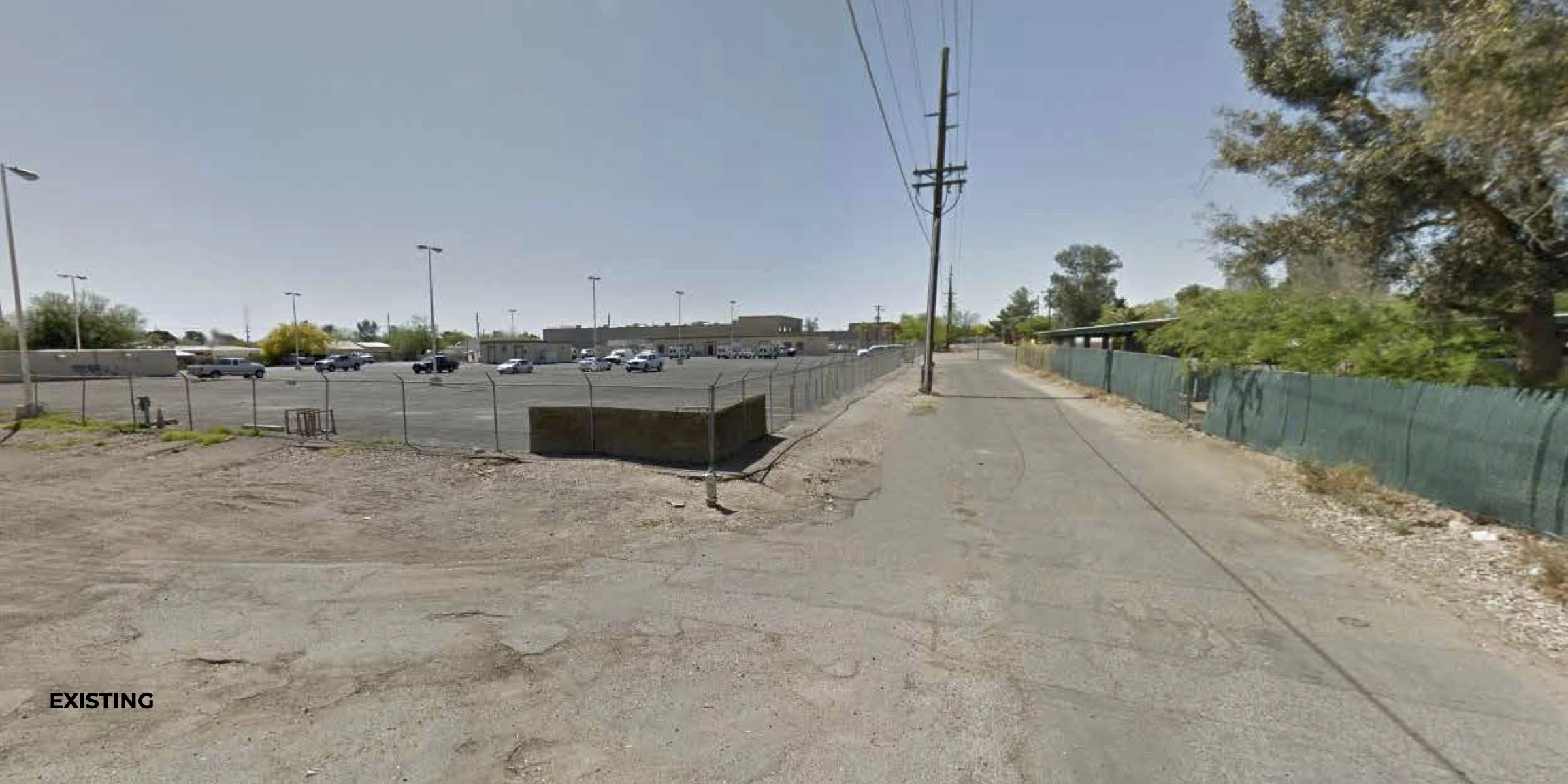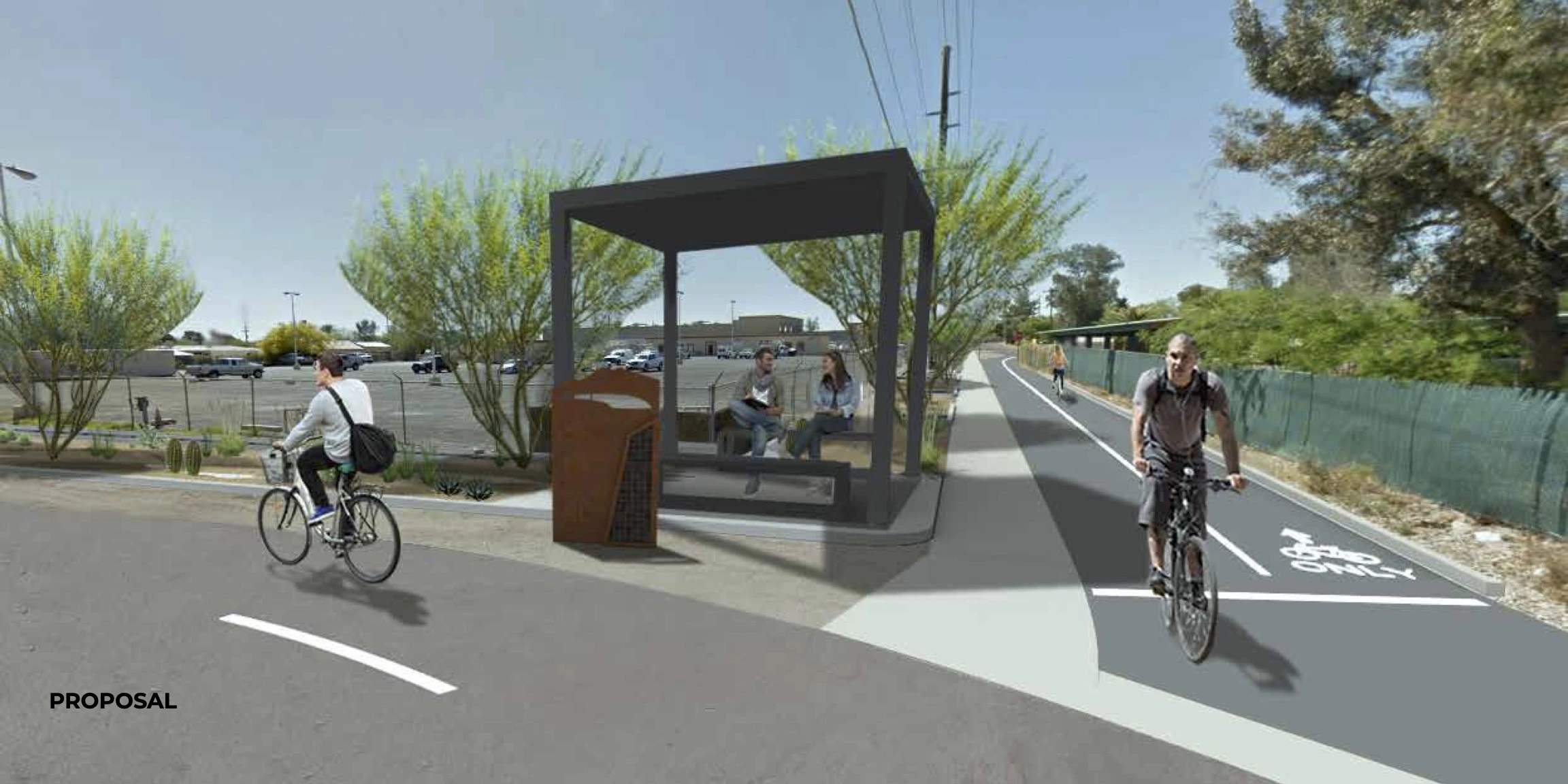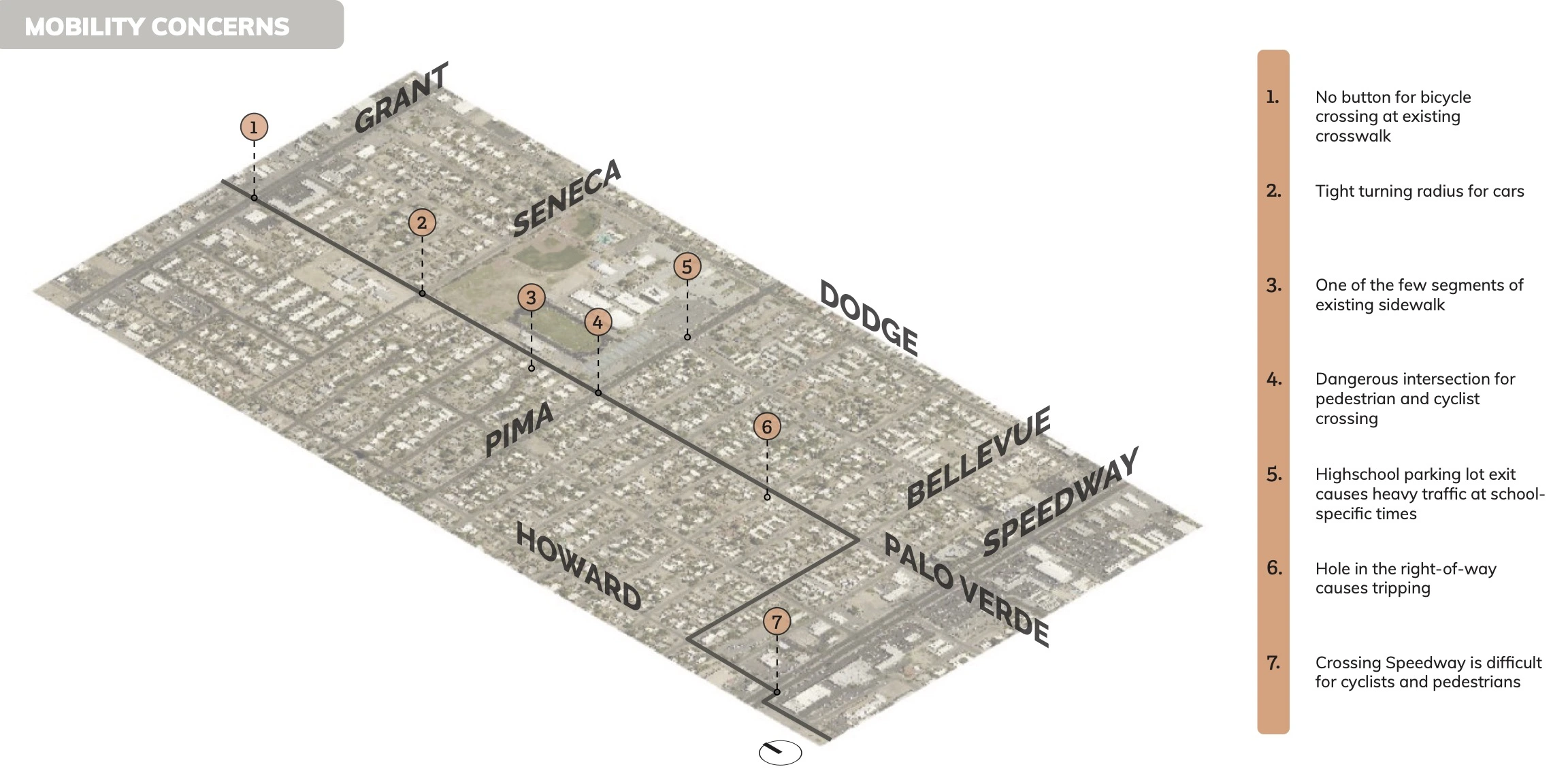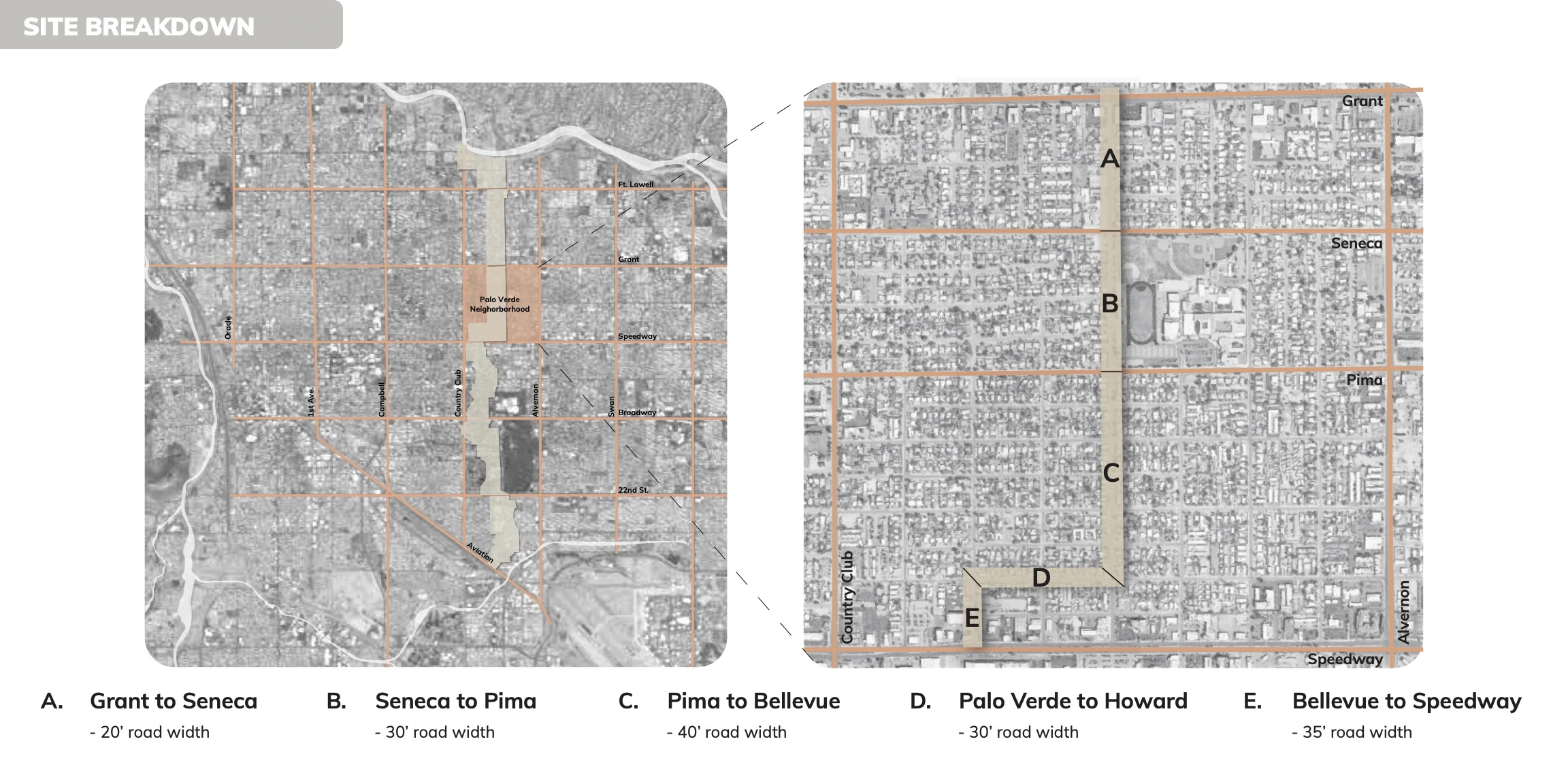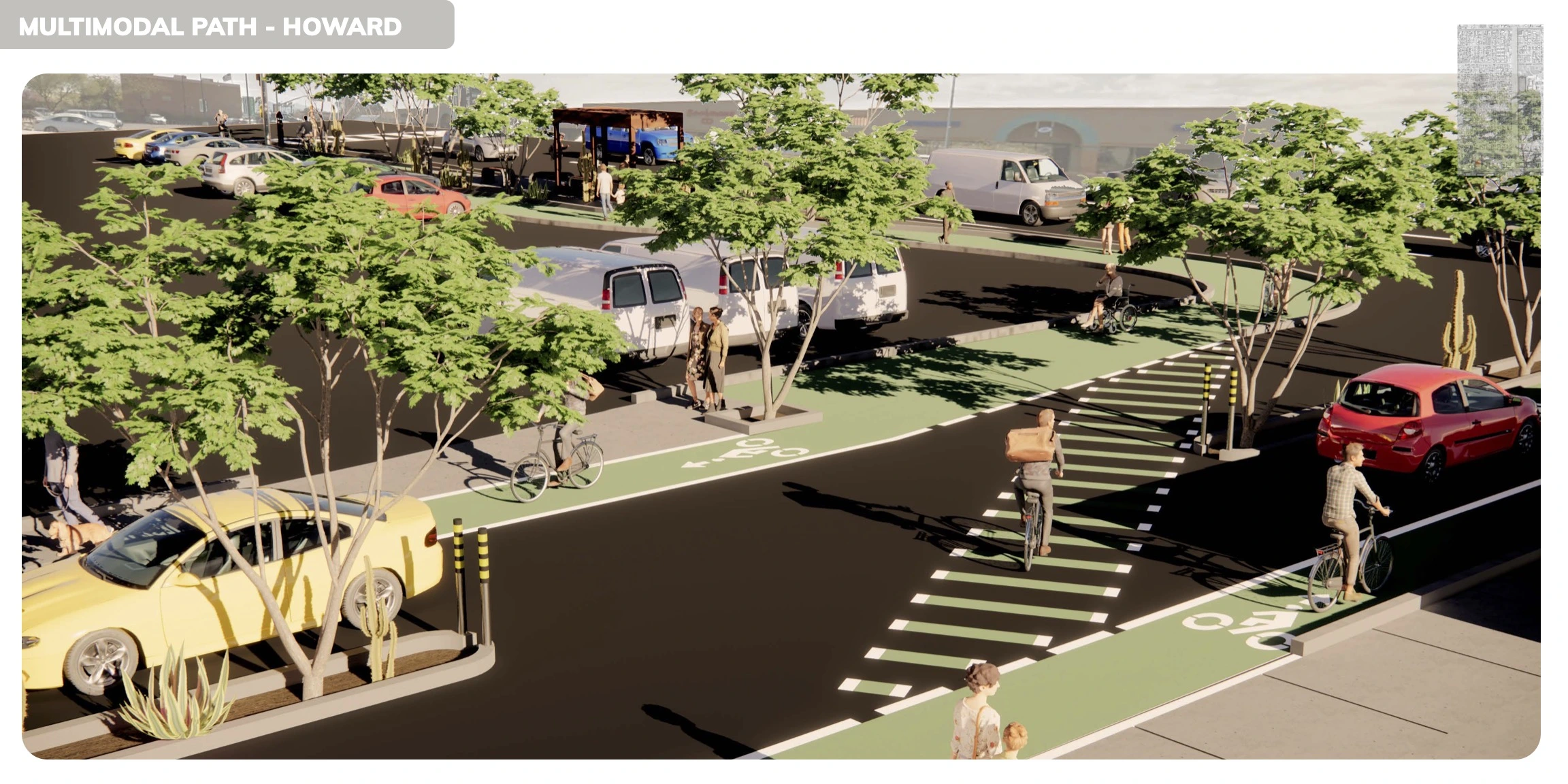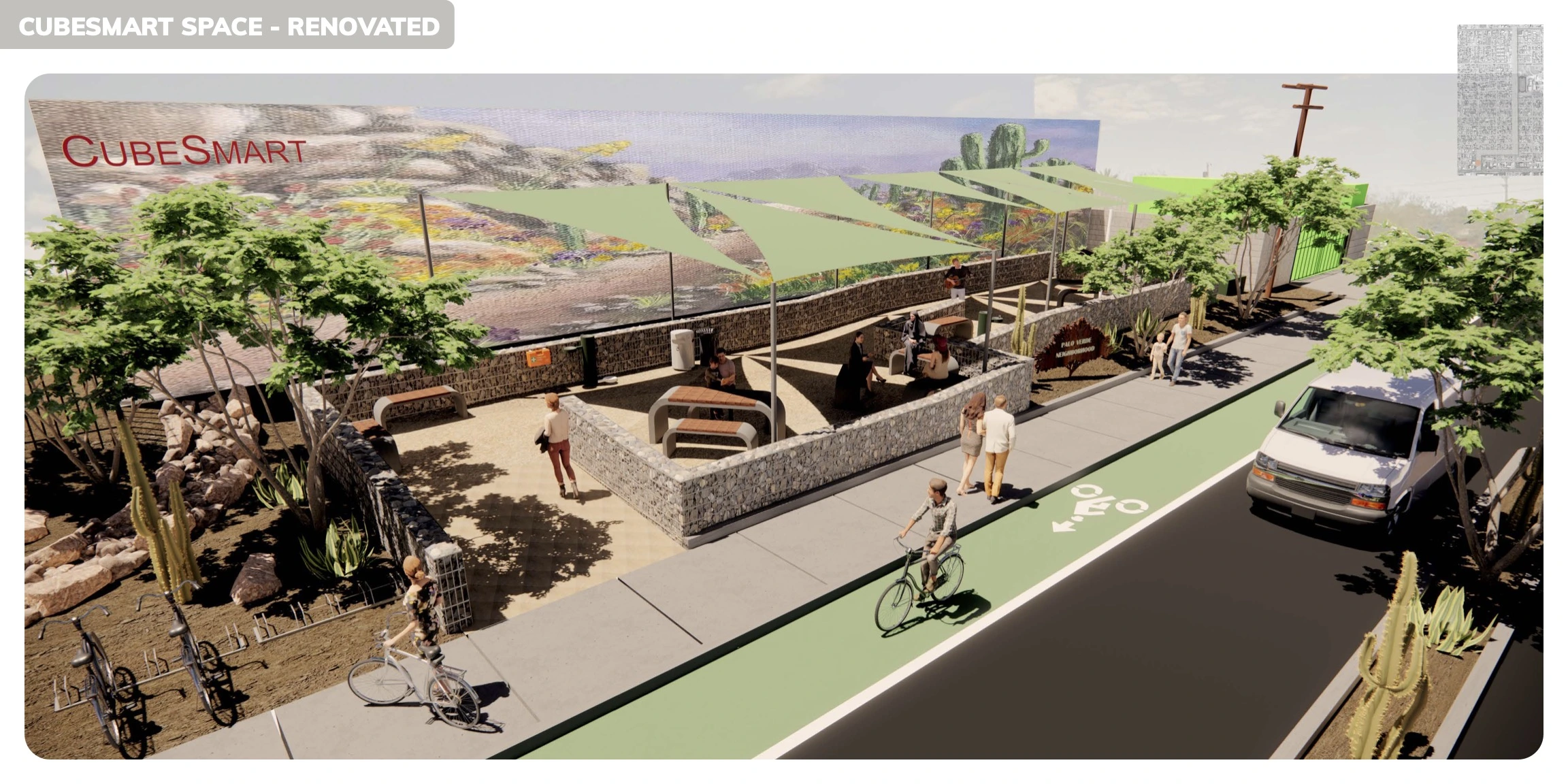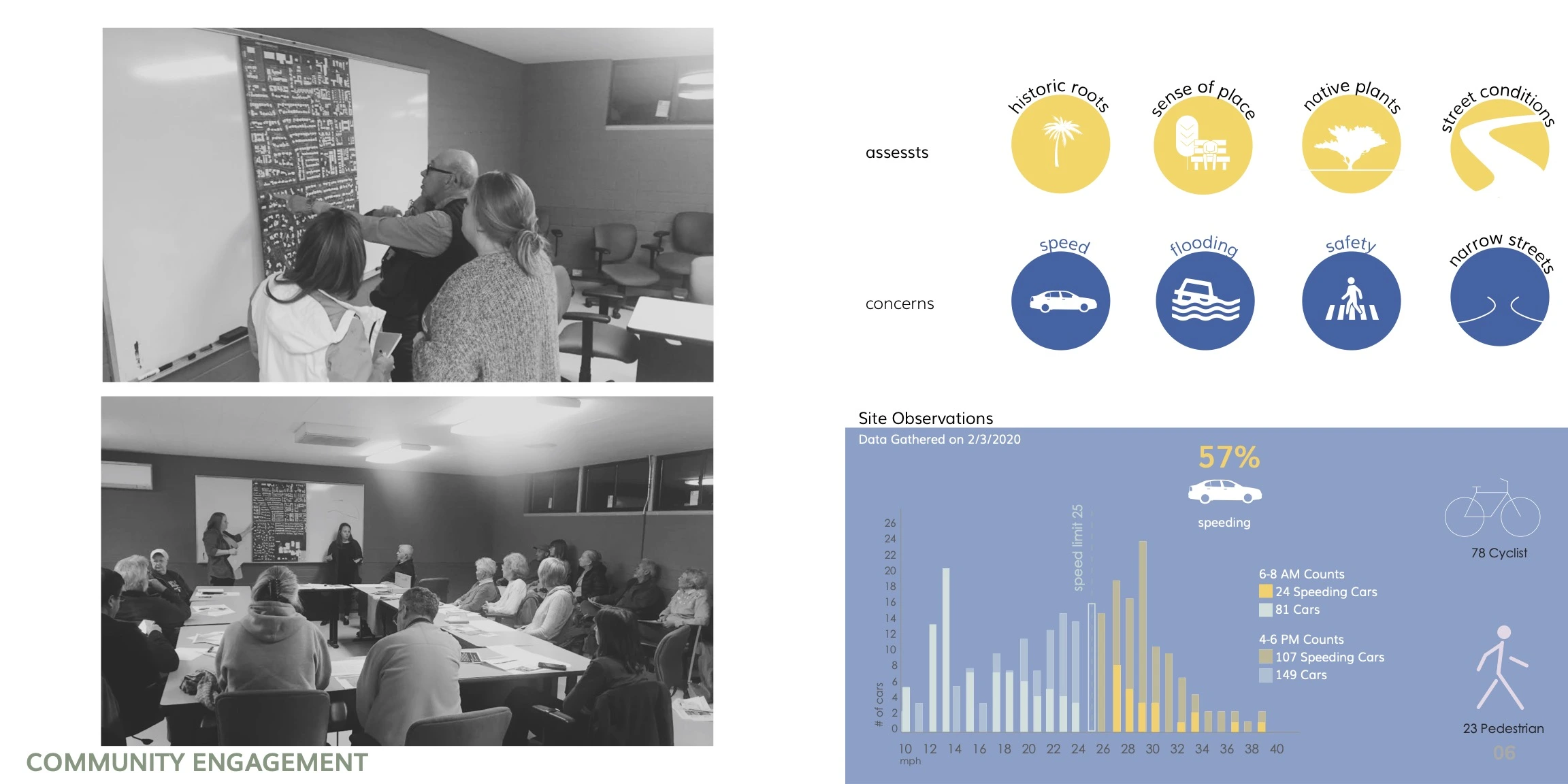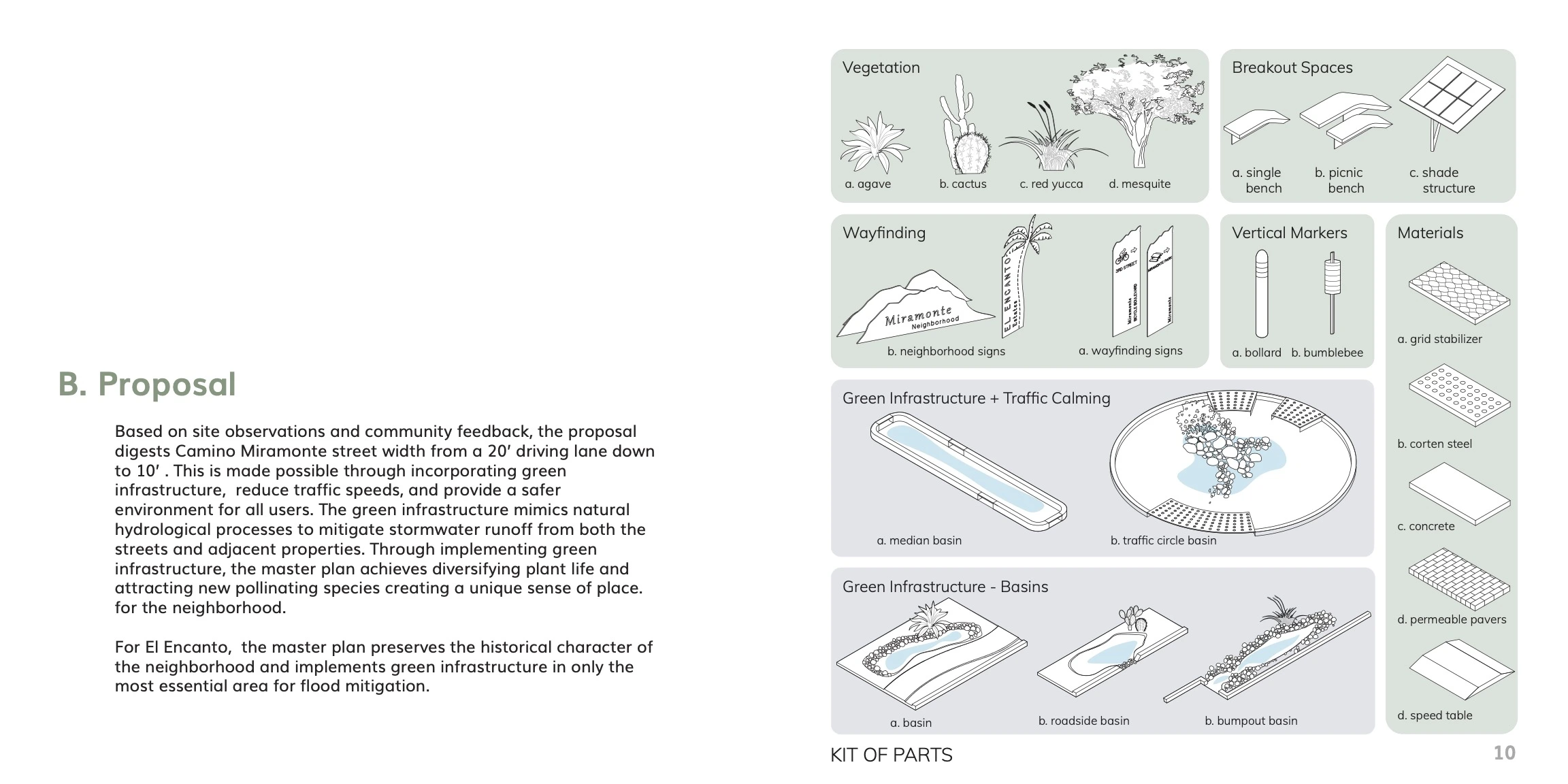Through community education, the Palo Verde and Camino Miramonte Bicycle Boulevard project undertaken by UArizona students proved that neighborhood streets can be augmented as “complete green streets” to provide multiple community benefits to improve equity, increase safety and reduce flooding.
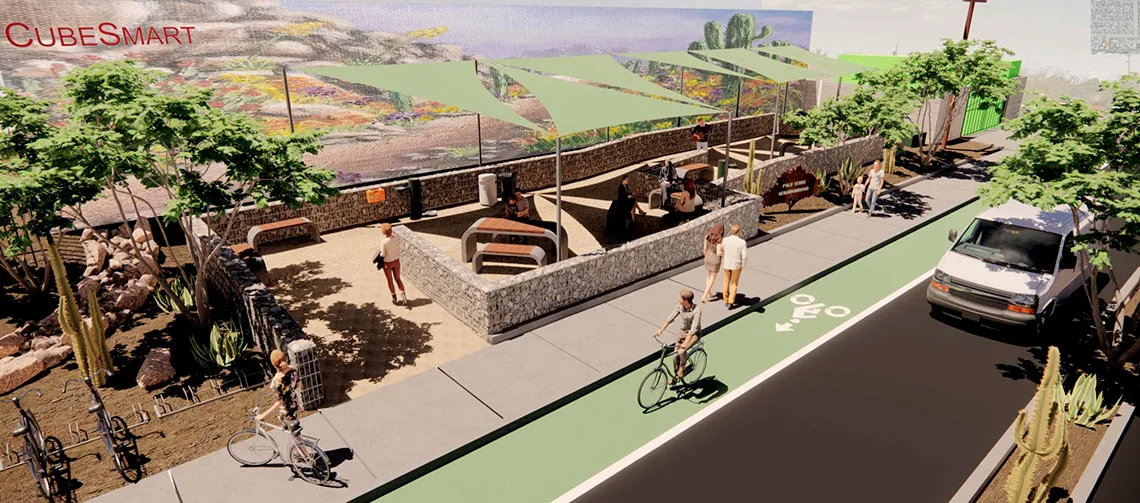
Researchers and Article
- ARC 451a Students of Architecture
- Courtney Crosson, Associate Professor of Architecture
Project Details and Reports
Budget: $10,000; funded by City of Tucson Department of Transportation and Mobility
Where: Tucson, Arizona
When: January 2020 - May 2020
Final Booklets
- Area 1: Rillito Road to Fort Lowell Road
- Area 2: Fort Lowell Road to Grant Road
- Area 3: Grant Road to Speedway Boulevard
- Area 4: Speedway Boulevard to Broadway Boulevard
- Area 5: Broadway Boulevard to 22nd Street
- Area 6: 22nd Street to Aviation Parkway
Project Overview
Transportation systems have historically been designed to move the greatest number of vehicles as efficiently as possible across a city from point to point. However, streets also represent roughly a third of a city’s public open space by area. In addition to being conduits, streets act as an important amateur on which an array of public services can be built to serve the diverse communities they connect. This project advanced public understanding of the importance of design in improving multimodal urban transportation networks. Through community education, this project proved that neighborhood streets can be augmented as “Complete Green Streets” to provide multiple community benefits to improve equity, increase safety and reduce flooding.
The Palo Verde and Camino Miramonte Bicycle Boulevard project was sponsored by the Tucson Department of Transportation and Mobility, supported by Pima County Flood Control District, led by one professor and thirteen Bachelors of Architecture students, and educated over ten neighborhoods in Tucson. This city-funded 6-mile bicycle boulevard cuts from the northern to southern city boundaries and is an important cross-city link to the large multimodal “Loop” that surrounds Tucson. It is a new model for neighborhood streets to support the communities they connect by providing localized benefits while ensuring the safety of all users. The community education project ran from January to May 2020 and construction documents for project implementation are currently being drawn at the city.
Project Gallery
Click image to view larger size and begin slideshow:


